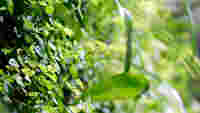WAGO Splicing Connector with Levers – Green Range
Nothing is too small to positively impact our environment. Therefore, we have reimagined one of our best-known products: the 221 Series Splicing Connector.
A variant made partially from bio-circular and recycled plastics has been created to help keep existing resources in circulation. This connector provides a more sustainable foundation for the installation from the very start.
Your Benefits:
- Plastics made in part from post-consumer recycled material (e.g., recycled PET bottles) and bio-based industrial and household waste (bio-circular)
- Reduced consumption of fossil resources by keeping existing resources in circulation
- Same quality and certifications as the 221 Series Splicing Connector





